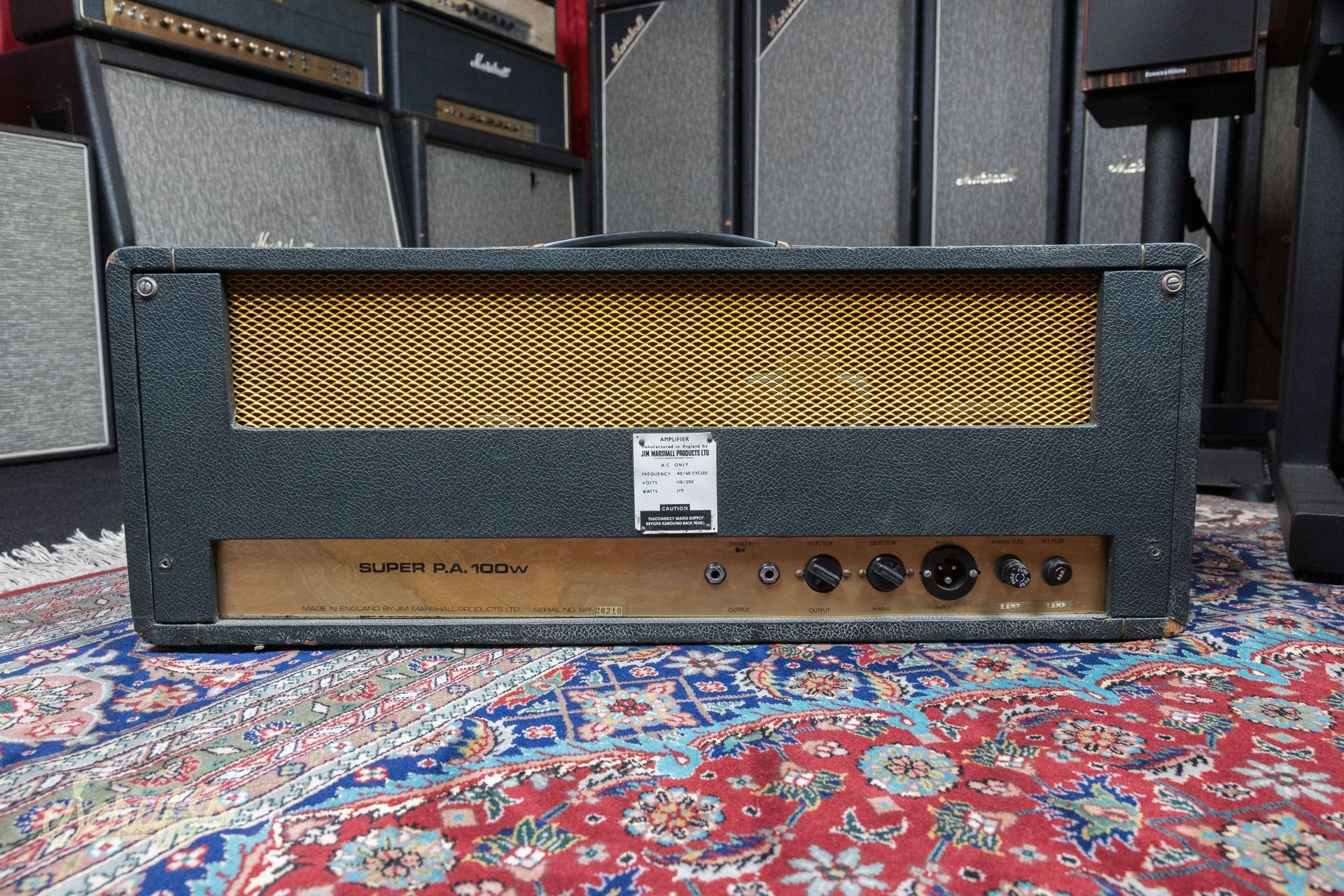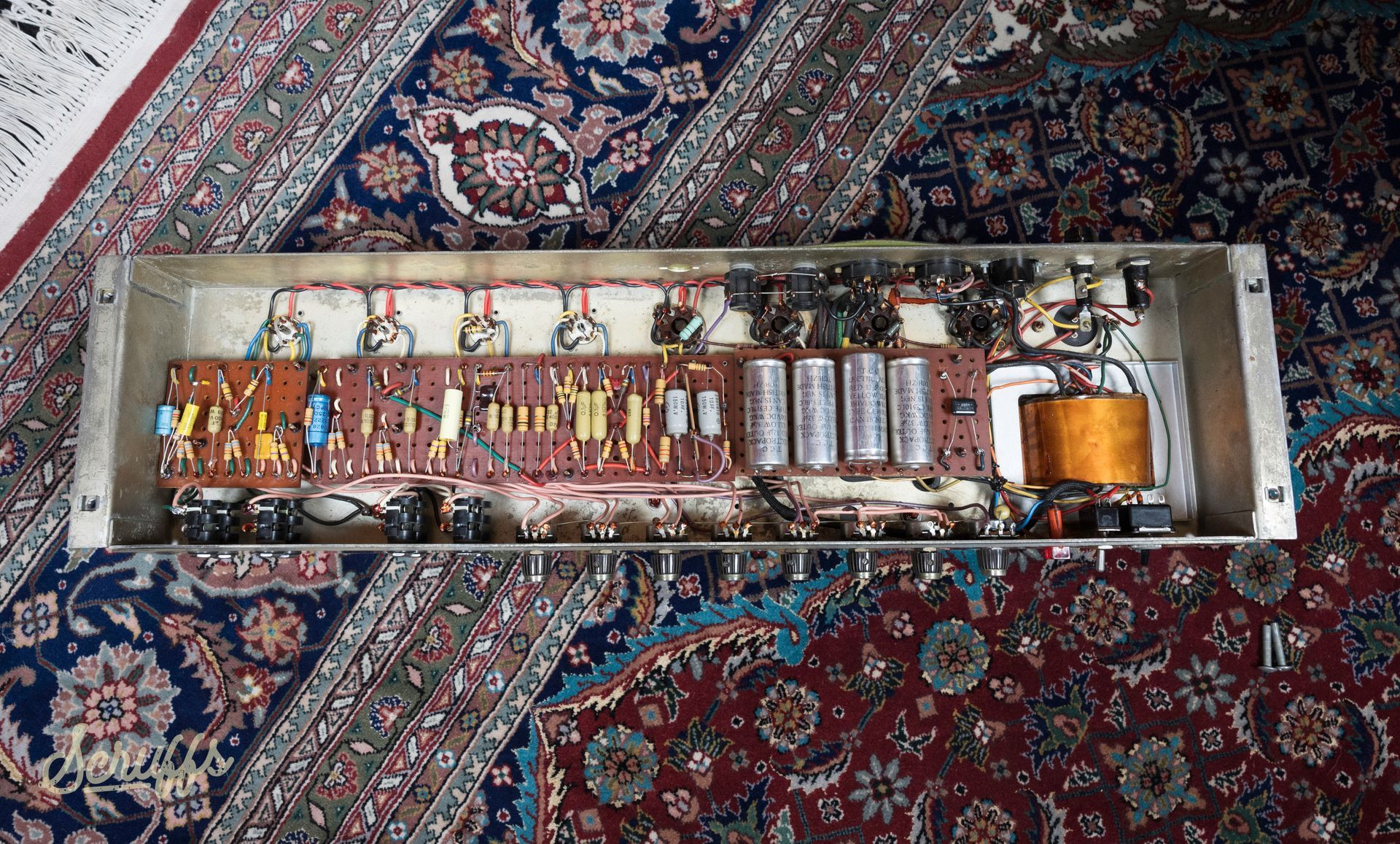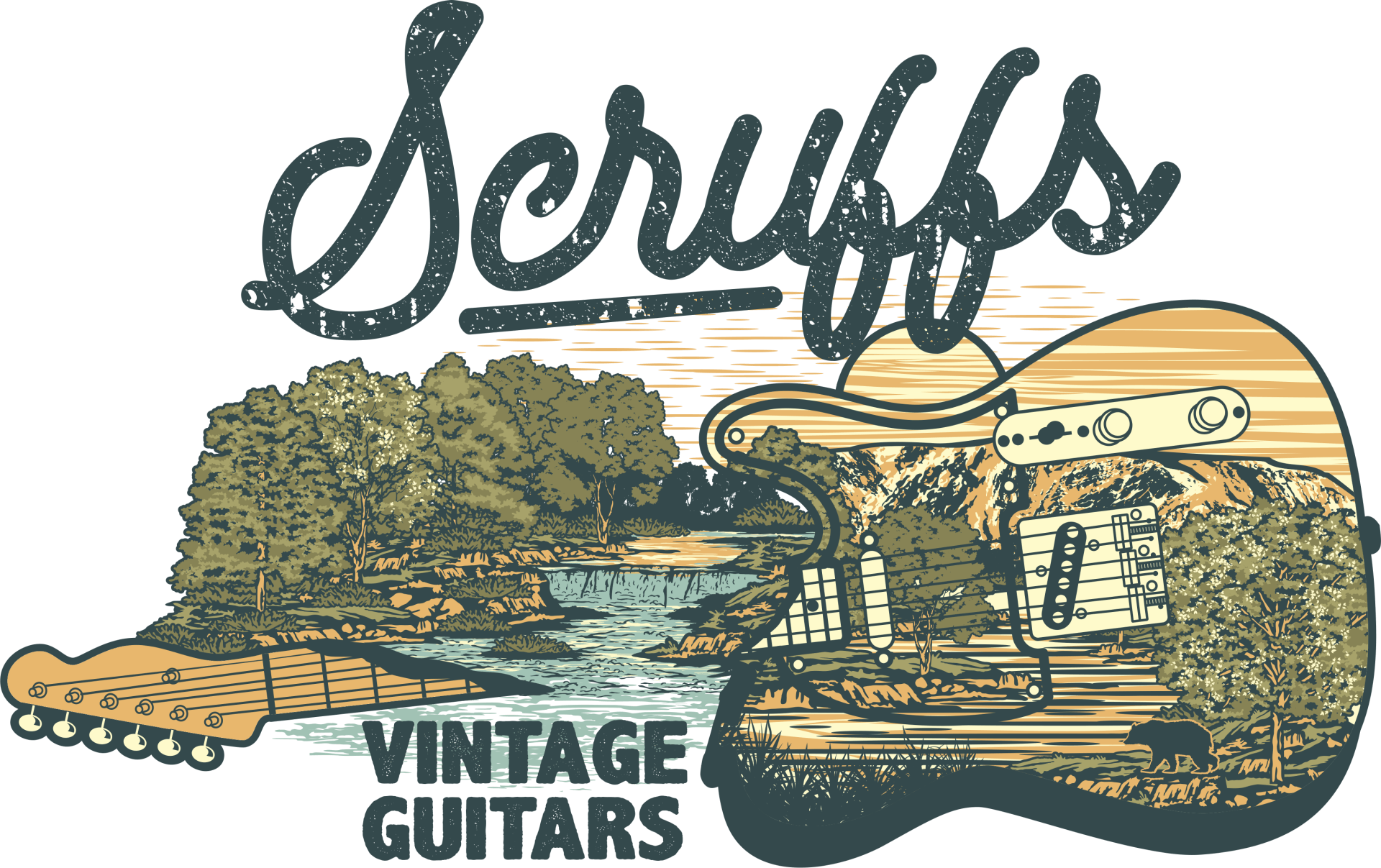Marshall Model 1968 – 100-Watt P.A. Amplifier

The Marshall Model 1968 was a powerful, feature-rich solution for mid-sized venues and touring bands looking for more from their P.A. systems. With its integrated four-channel mixer, robust power output, and signature Marshall tone shaping, the 1968 bridged the gap between portable P.A. heads and full professional systems—offering clarity, headroom, and versatility in a stage-ready package.
Technical Overview
The 1968 provided:
100 watts of output power
Eight total inputs, grouped into four channels (two inputs per channel)
Four independent channel volume controls
Shared master tone section, including:
Presence
Bass
Middle
Treble
ON/OFF and Standby switches
This built-in mixer format gave performers the ability to control multiple microphones or instrument sources simultaneously, without needing an external mixing board—an invaluable feature in the early 1970s live sound landscape.



Physical Design and Dimensions
As listed in the May 1971 catalog, the 1968 measured:
Height: 10¾ inches (27.31 cm)
Width: 28¼ inches (71.75 cm)
Depth: 8½ inches (21.59 cm)
The unit was housed in a durable black vinyl-covered cabinet with gold control panel, classic Marshall knobs, and recessed handle for portability. Its low-profile shape made it stackable with speaker columns or rack equipment.
Use and Setups
The 1968 was featured in several official Marshall P.A. configurations, including:
100PA/1 – with two 4x12" Model 1969 column speakers
100PA/3 – with two 4x10" Model 1991 columns
Studio, school, and club installations, where it served as the core of flexible voice and instrument amplification systems
Its combination of power and simplicity made it a favorite among small clubs, churches, and touring acts needing reliability and full-range sound in a compact rig.
Performance and Sound
The 1968 delivered a strong midrange presence and articulate highs, optimized for vocal clarity, spoken word, and lightly amplified instruments. While not as thunderous as the 200-watt Model 1966, it retained excellent headroom and sonic fidelity at performance volumes.
It also worked well as a keyboard or acoustic instrument amp, and some players even adapted it for guitar use, exploiting its warm tone and responsive EQ section.
Collector Appeal
While it was a production workhorse in its day, surviving 1968 units are now considered rare—especially unmodified examples with their original transformers and intact control panels. For collectors, engineers, or artists seeking authentic British P.A. tones from the era, the 1968 is a powerful and historically rich addition to any vintage rig.
Got a vintage Marshall P.A. amp like the 1968?
Scruffs Vintage Guitars is buying Marshall amplifiers from 1962–1974, including original P.A. heads like the 1968. Contact us now for a professional appraisal and a serious, top-dollar offer.






